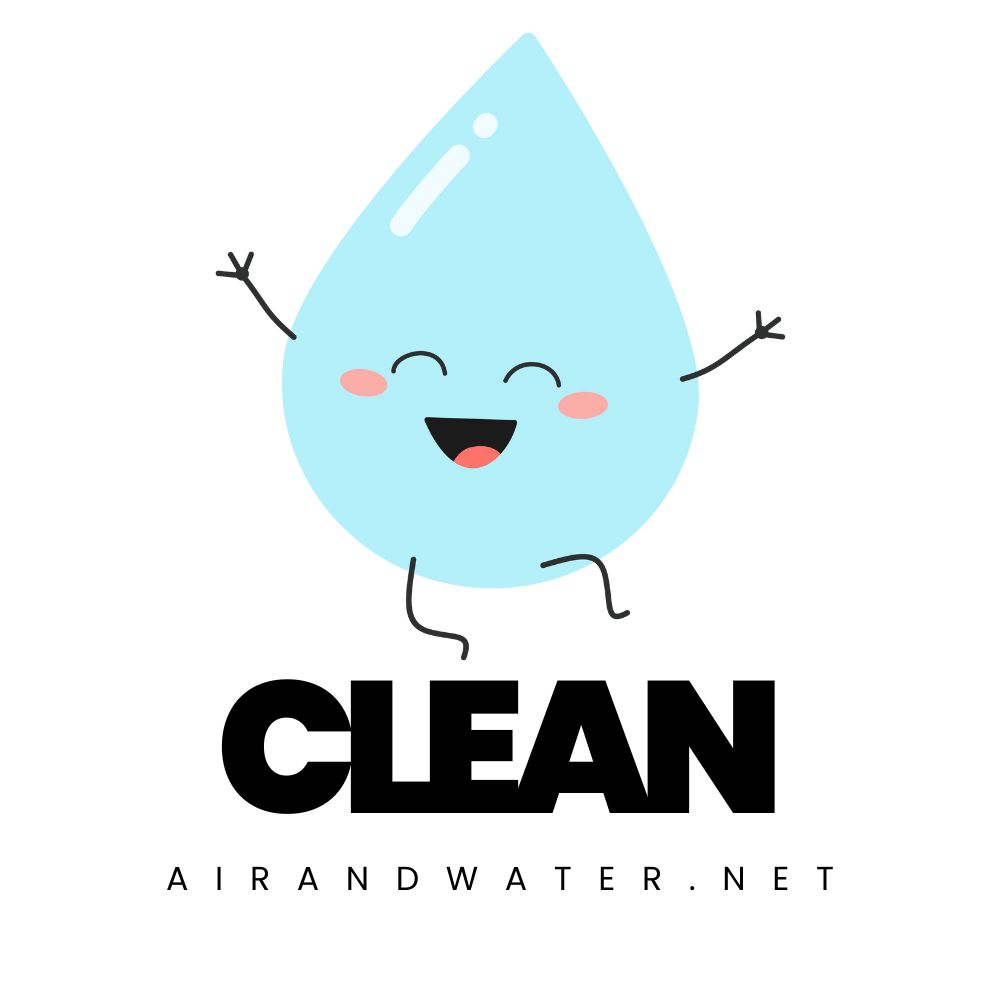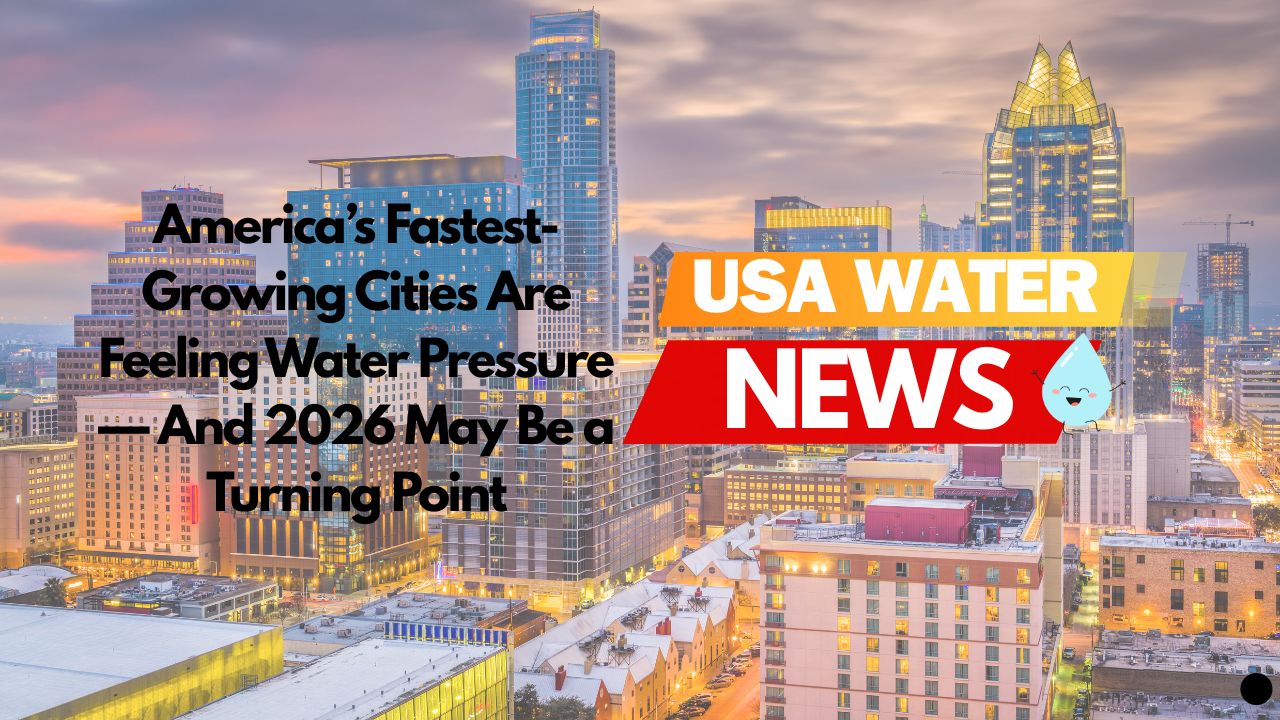As 2026 begins, Americans continue moving to booming regions like Phoenix, Austin, Raleigh, Tampa, and Boise — and many residents are seeing an unexpected side effect of rapid growth: their tap water tastes different, smells different, or behaves differently than it used to.
The water is still safe, and every one of these cities meets state and federal standards. But the experience of drinking water is changing — in ways most people never imagined when they packed up and moved South or West.
What’s happening now is not a crisis — but it is a glimpse of what 2026 may represent: a turning point for America’s high-growth cities as their water systems stretch to serve millions of new residents.
The Hidden Challenge Behind a City’s Success
When people talk about booming cities, they usually mention better jobs, sunshine, cheaper homes, or a great lifestyle. What almost no one talks about is the infrastructure underneath it all — especially the water.
But in places like Phoenix, Austin, Raleigh, Tampa, Boise, Charlotte, and Las Vegas, water utilities are managing one of the most difficult tasks in the country:
Deliver more water to more people, over longer distances, with infrastructure that wasn’t designed for this pace of expansion.
These utilities are not failing.
They are adapting — quickly, creatively, and often invisibly.
Yet for the average homeowner turning on a kitchen tap, the small changes can suddenly feel big.
Residents report that water sometimes:
- tastes slightly more “treated,”
- shifts in flavour during warm spells,
- develops a faint earthy or musty note in spring,
- smells more chlorinated on some days,
- appears briefly cloudy after pressure changes,
- or drops in pressure for a moment unexpectedly.
These shifts aren’t signs of contamination or danger.
They’re signs of a system stretching to serve a rapidly growing city — and doing so safely.
Why Rapid Growth Changes the Taste and Feel of Tap Water
Consider Austin, Texas, one of the fastest-growing cities in the U.S.
Over the last decade, Austin expanded outward in every direction. New neighbourhoods miles from the city’s core now rely on pipelines that never existed until recently. When water travels longer distances, two things happen:
- disinfectant levels fluctuate more, and
- temperature changes occur more often.
Even tiny changes can alter taste or smell long before they affect safety.
Meanwhile, in Phoenix, sprawling development on the metropolitan edges means water now travels farther across hot, dry terrain. Reservoir levels rise and fall with snowpack melt, monsoon storms, and long drought cycles — all factors that influence how water tastes throughout the year.
In Raleigh and Charlotte, population growth is pushing utilities to blend surface water and groundwater more frequently. Blending is completely safe and standard practice, but each water source has its own natural “signature” — minerals, temperatures, organic compounds. When blending ratios shift, taste does too.
And in Boise, where farmland is transforming into housing developments, every new pipeline connection changes how water flows, how pressure balances, and how disinfectant moves. These subtle hydraulic shifts can cause brief cloudiness or small variations in taste.
Seasonal Weather Is Amplifying the Strain in 2026
The U.S. is entering 2026 with unusually sharp swings between cold snaps, early warm periods, heavy rainfall, and sudden thaws. These rapid transitions affect:
- reservoir temperature,
- algae and organic material,
- chlorine demand, and
- how water interacts with distribution systems.
In the past, utilities could anticipate season changes with reasonable certainty.
In 2026, these patterns are less predictable.
So when a warm spell hits Raleigh in February, or Phoenix experiences a sudden cold dip, treatment plants adjust — but those adjustments travel differently through longer, expanding pipelines.
That means more noticeable variation for residents living in new or fast-growing areas.
The Water Is Safe — The Experience Is Changing
This is the key message for residents:
Taste, odour, and clarity changes do not mean the water is unsafe.
All the cities mentioned:
- meet EPA Maximum Contaminant Levels (MCLs),
- comply with PFAS monitoring requirements,
- follow the Stage 2 Disinfection Byproducts Rule (DBPR),
- routinely test for lead, metals, and bacteria, and
- publish annual Consumer Confidence Reports.
The sensory differences — earthy, musty, chlorinated, metallic, warm, cloudy — stem from population growth + pipeline expansion + new hydraulics + seasonal instability, not from contamination.
Why Growth Makes Water More Sensitive to Change
A water system is constantly evolving. As cities expand:
Water travels farther.
Longer distances amplify small shifts in temperature and disinfectant levels.
Pipelines are added.
Every new subdivision changes flow patterns and pressure balance.
Treatment plants adjust more frequently.
More people = more demand = more operational fine-tuning.
Weather impacts grow stronger.
Heat spikes, cold snaps, and storm runoff affect larger networks in more complex ways.
These changes are normal growing pains — not signs of failure.
How Residents Can Keep Tap Water Consistent
If people want a steady, neutral taste while their city grows, many choose:
- refrigerating a jug of tap water,
- running the tap for 20–30 seconds,
- cleaning faucet aerators, or
- using a certified home filter for flavour/taste consistency.
Filters certified under:
- NSF-42 (chlorine taste/odour),
- NSF-53 (lead/metals), and
- NSF-58 (reverse osmosis systems)
can provide consistent taste year-round.
These are optional, not required — purely for preference.
2026: A Year of Transition
The story unfolding in 2026 isn’t about declining water quality.
It’s about modern water systems expanding in real time to match the extraordinary growth reshaping American cities.
Utilities are upgrading pipelines.
Adding treatment capacity.
Building new storage tanks.
Deploying better sensors and monitoring.
Planning for the next decade of growth.
This is a period of adaptation — the natural next chapter in a city’s evolution.
And residents are experiencing something rare:
what it feels like when a water system grows alongside the city it serves.
CleanAirAndWater.net will continue tracking how America’s fastest-growing cities adapt their systems throughout 2026 — and what these changes mean for families at the tap.
Sources & Notes
1. City of Austin Water – Treatment & Distribution System Overview
https://www.austintexas.gov/department/water
(Used for details on Austin’s rapid expansion, system adjustments, and distribution behaviour.)
2. Phoenix Water Services – Water Sources & Seasonal Treatment
https://www.phoenix.gov/waterservices/watersupply
(Confirms Phoenix’s reliance on surface water, seasonal operational shifts, and long-distance delivery.)
3. Raleigh Water – System Growth & Infrastructure Expansion Updates
https://raleighnc.gov/water-and-sewer
(Official insights into population-driven pressure on pipeline expansion and water distribution.)
4. Boise Public Works – WaterShed / Drinking Water Information
https://www.cityofboise.org/departments/public-works/watershed/
(Referenced for Boise’s expansion areas and the impact of system growth on hydraulics.)
5. EPA – Climate Change Indicators: Water
https://www.epa.gov/climate-indicators/climate-change-indicators-water
(Supports “seasonal whiplash,” temperature-driven chemistry changes, runoff impacts.)
6. USGS – Taste & Odor Compounds (Geosmin, 2-MIB)
https://www.usgs.gov/mission-areas/water-resources/science/taste-and-odor-compounds
(Supports explanation of warmer seasons and increased organic load affecting taste.)
7. EPA – Stage 2 Disinfection Byproducts Rule (DBPs)
https://www.epa.gov/dwreginfo/stage-2-disinfectants-and-disinfection-byproducts-rule
(Background for treatment adjustments during growth and seasonal shifts.)
8. EPA – Consumer Confidence Reports (CCR) Directory
https://www.epa.gov/ccr
(Used to confirm municipal compliance in referenced cities.)
Check your water now!
We have translated and compiled water reports on every state in the US, and covered over 100 cities. Find out how good your water is today!

Please read – our information
The information presented on cleanairandwater.net is compiled from official water quality reports, trusted news sources, government websites, and public health resources. While we strive for accuracy and thoroughness in our presentations, we are not scientists, engineers, or qualified water quality professionals.
Our mission is to present water quality information in an accessible, real-world format that helps people understand what’s in their water and make informed decisions about their health and safety. We believe that complex environmental information should be available to everyone in a format that’s easy to understand.
We make every effort to ensure our content is current and accurate, but we cannot guarantee that all information is complete or error-free. This website should not replace official communications from your local water utility or health department. We always recommend consulting official sources for the most up-to-date information regarding your specific water system.
Clean Air and Water is not liable for any unintentional errors, omissions, or outdated information. The content on this site is provided for informational purposes only and should not be considered professional advice.


